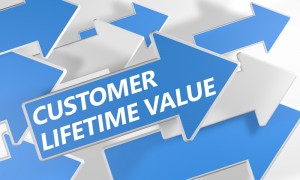When Visitor Tracking Violates the Law
![]() Make sure you understand where visitor tracking violates the law. Utter the term “sharing data” and most IT groups cringe. Your legal team pulls out their cease and desist demands. Your customers collectively scream “hell no”. Your company might be subjecting themselves to being involved in a lawsuit, such as what happened to Facebook in this lawsuit. The lawsuit stated Facebook violated Right of Publicity, Right of Privacy laws and consumer protection laws in California by sharing members’ personal information with others for commercial purposes.
Make sure you understand where visitor tracking violates the law. Utter the term “sharing data” and most IT groups cringe. Your legal team pulls out their cease and desist demands. Your customers collectively scream “hell no”. Your company might be subjecting themselves to being involved in a lawsuit, such as what happened to Facebook in this lawsuit. The lawsuit stated Facebook violated Right of Publicity, Right of Privacy laws and consumer protection laws in California by sharing members’ personal information with others for commercial purposes.
Now ask your sale and marketing team if they like the concept of opening up your CRM and sharing your contacts with your competitors and anyone else. Would you knowingly do this? Is your current provide sharing data for commercial reasons similar to Facebook and also in the state of California?
If you are using a number of “Visitor Tracking” aka Visitor Identification tools, you are likely doing exactly that! Here is how it works:
Your company invests money in a technology that helps you create relationships with individual visitors to your website usually by putting a “cookie” on an individual’s device when they fill out a form on your site (as an example). That allows you to know that “Customer: Sarah Smith” is on your site; and you can help her find the information that she cares about in less time, customize her experience, or as a way to trigger future discussions. In short, Customer: Sarah Smith is happy to have this personalized experience with your company.
The problem arises when Competitor “X” decides to invest in the same Visitor tracking product. The Visitor tracking provider will sell their ability to track more visitors than their competitors. How do they do that? Simple: they violate Right of Publicity and Right of Privacy laws. When a prospect that you have identified goes to Competitor “X”’s site they are searching the customer’s computer for all cookies they added regardless of the source. Thus, they are using your data to 1.) Help them sell their software to your competitors 2.) Help your competitors identify competitive opportunities against your company.
It gets worse. Many of these visitor tracking companies are touting their ability to provide email addresses along with the names of the people identified. Most won’t tell you if they secured this email because a visitor opted in via one of your forms, or if they “borrowed” the data from one of your competitors. That makes it very difficult (and often illegal) for you to contact these people through automated email methods since they have never opted-in to receive email from you. In fact, those that HAVE opted-in may become polluted.
How do you avoid hurting your company, and helping your competition?
- Make sure your Visitor Identification provider is not sharing data amongst its customers
- Make sure the source of all email triggered communications are segmented to only people that have opted-in to receive messages from your organization
- Demand that your provider indemnifies you against willful data breaches and “sharing” of data with any other companies
- Make sure your provider understands they could be violating Right of Publicity, Right of Privacy and consumer protection laws
The bottom line is that while it may be alluring at first to go with a company that shows you the most name/email addresses in their daily reports of site visitors, there are a number of other marketing techniques that can be employed to keep your company safe and within the guidelines of the law.








